#photographyedition
Explore tagged Tumblr posts
Text
How to Capture Stunning Travel Photos
For cheap and best Travel Bookings - https://travelinternationals.com/
Travel photography is an art that combines creativity, technical knowledge, and a keen eye for detail. Whether you're visiting a bustling city, a serene beach, or a mountain landscape, knowing how to capture stunning travel photos can turn your trips into a visual memory album. Here are some tips to help you improve your travel photography and get those perfect shots.
1. Plan Your Shots
Before heading out to explore your destination, take some time to research the locations you plan to visit. Look for places with natural beauty, iconic landmarks, or cultural significance. Knowing your surroundings allows you to anticipate the best time to take photos, such as during sunrise or sunset when the lighting is soft and golden. Planning in advance can help you make the most of your time and avoid missing out on those Instagram-worthy shots.
2. Use the Right Equipment
While smartphones have become more than capable of capturing high-quality images, investing in a DSLR or mirrorless camera with a good lens can elevate the quality of your travel photos. A wide-angle lens is ideal for landscape shots, while a zoom lens can help capture distant subjects without losing clarity. Don't forget about accessories like tripods and extra memory cards to ensure you're ready for any shot.
3. Focus on Composition
Good composition is key to taking eye-catching photos. The rule of thirds is a simple technique where you divide your frame into three equal parts both horizontally and vertically, placing the subject along the lines or at intersections. This adds balance and visual interest to your photos. Additionally, experiment with different angles to capture a unique perspective, whether it's shooting from above, below, or at eye level.
4. Capture the Details
While wide landscapes and iconic landmarks are essential to any travel photo album, don't forget the smaller, intricate details. The textures of a cobblestone street, the colorful patterns of local markets, or the architecture of an old building can add depth and personality to your collection. Sometimes, these little moments make the most memorable photos.
5. Edit Your Photos
After capturing your shots, spend some time editing them to enhance their colors, sharpness, and overall appeal. There are numerous apps and software available that allow you to adjust lighting, contrast, and saturation. However, it's essential to keep the edits natural, ensuring that the photo still represents the true beauty of the place.
By following these tips, you'll be able to capture stunning travel photos that tell the story of your adventures, making it easier to relive those experiences for years to come.
#travelphotography#photographytips#travelphotos#cameraequipment#landscapephotography#adventurephotos#instatravel#travelblogger#photographyediting#beautifuldestinations
0 notes
Text

Headshot Retouching Service
Enhance your professional image with our premium headshot retouching service. Whether you need a polished look for your LinkedIn profile, corporate website, or acting portfolio, our expert editors deliver flawless results while maintaining a natural appearance. See more
#cutoutcolor#HeadshotRetouching#PhotoEditing#ProfessionalHeadshots#RetouchingServices#PhotoEnhancement#FlawlessPortraits#ImageRetouching#LinkedInPhotos#ActorHeadshots#BusinessPortraits#PolishedLook#PhotographyEditing#CorporateHeadshots#NaturalRetouching#ProfilePicturePerfect
0 notes
Text
Navigating Adobe Software: Essential Tips for New Users in Graphic Design and Photography
Image editing with adobe: Common Questions Answered
1.Is Adobe good for beginners?
Yes, Adobe offers user-friendly tools like Adobe Spark and Adobe Photoshop Elements that are suitable for beginners. These programs provide intuitive interfaces, tutorials, and resources to help new users learn. However, more advanced software like Adobe Photoshop or Illustrator may have a steeper learning curve. Overall, Adobe can be a good choice for beginners willing to invest time in learning.
2. What all is Adobe used for?
Adobe offers a range of software products used for graphic design, video editing, web development, and document management. Key applications include Photoshop for photo editing, Illustrator for vector graphics, Premiere Pro for video editing, After Effects for motion graphics, and Adobe Acrobat for PDF management. These tools are widely used by professionals in creative industries.
3. What is Adobe used for in photography?
Adobe is primarily used in photography for editing and enhancing images. Adobe Photoshop allows for detailed retouching, compositing, and manipulation of photos, while Adobe Lightroom is used for organizing, editing, and processing large batches of images. Both tools help photographers achieve professional-quality results, streamline workflows, and manage their photo collections effectively.
4. Is Adobe difficult to use?
Adobe software can be challenging for beginners due to its complexity and extensive features. However, many users find it manageable with practice and tutorials. The learning curve varies depending on the specific application (like Photoshop, Illustrator, or Premiere Pro) and the user's prior experience with design tools. Overall, it requires time and dedication to master.
5. Where is Adobe most used?
Adobe is most used in creative industries, including graphic design, photography, video editing, and web development. Popular applications like Photoshop, Illustrator, and Premiere Pro are utilized by professionals for tasks such as image manipulation, vector graphics creation, and video production. Additionally, Adobe tools are often used in marketing, advertising, and digital content creation across various sectors.

Visit: VS Website See: VS Portfolio
#PhotoEditingTools#BeginnerDesigners#AdobePhotoshop#AdobeIllustrator#PhotographyEditing#GraphicDesign
0 notes
Text
Why Every Graphic Designer Needs Clipping Path Services?

Say goodbye to messy photo backgrounds with our ✂️ clipping path service! ✨ Transform your photos into professional masterpieces with just a few clicks.📸
0 notes
Text
Learn Pro Photo Retouching with Pixel Ridz
Join Pixel Ridz’s photo retouching classes and learn to edit like a pro! From basic touch-ups to advanced techniques, we’ll teach you how to enhance images, perfect skin tones, and create stunning visuals. Enroll today to elevate your photo editing skills!
#PhotoRetouchingClass#PixelRidz#LearnEditing#PhotoEditingSkills#RetouchingTutorials#MasterRetouching#EditingWorkshop#PhotographyEditing
0 notes
Text
Mastering the Art of Shooting and Editing Creative Makeup Product Photography
Makeup product photography is all about showing off the product in a way that grabs attention and tells a story.
Whether it's the bold color of a lipstick or the smooth texture of a foundation, capturing these details can make all the difference.
This guide will help you learn how to take and edit creative photos of makeup products in a way that's easy to follow, even if you're just starting out.

1. Plan Your Photoshoot
Before taking any photos, you need a plan. This helps you get clear on how you want the final images to look.
Know the Product and Brand
Each makeup brand has its own style. Some brands are luxurious and elegant, while others are bright and playful.
Knowing the brand's identity helps you create photos that match their vibe.
For example, if you’re shooting for a high-end brand, use fancy background remove's like black velvet or marble.
If the brand is fun and casual, go for bright colors and playful props. Always make sure the product is the main focus of the shot.
Create a Mood Board
A mood board is a collection of images that inspire you.
You can use Pinterest to gather ideas on styles, colors, lighting, and props.
This will help you stay on track with your vision and show others what you’re going for.
Choose Your Location
For makeup products, you don’t need a big, fancy location.
A small, clean space at home or in a studio works great. A simple backdrop, like a white surface or pastel colors, helps the product stand out.
You can also add texture by using props like wood or glass to make the photos more interesting.
2. Equipment You’ll Need
You don’t need super expensive gear to get good photos, but having the right tools will make things easier.
Camera and Lens
Camera: A DSLR or mirrorless camera is great because you can control the settings.
Look for a camera that shoots in RAW format for easier editing.
Lens: A macro lens is perfect for capturing the small details of makeup, like the shine of an eyeshadow or the texture of a lipstick.
A 50mm or 100mm lens works well.
Lighting
Lighting is super important in photography. It helps you show the true colors and textures of the product.
Softbox or Ring Light: These lights give even, soft light that reduces harsh shadows.
Reflectors: These bounce light onto the product, making the lighting look balanced.
Light Positioning: Try different angles for your lights. Lighting from the side adds shadows and depth, while lighting from the front makes everything look even and flat.
Tripod
A tripod helps keep your camera steady, which is really important for sharp, clear images.
This is especially useful when taking close-up shots of small products like makeup.
3. Setting Up Your Shot
Now that you have your gear, it’s time to set up the shot. How you arrange the products is key to creating a great image.

Product Arrangement
There are different ways to display makeup products, depending on the look you want:
Flat Lay: This is a top-down shot where the products are placed on a flat surface.
It’s great for showing multiple items or creating a scene with props.
Hero Shot: This focuses on one main product. The product is usually placed at an angle to highlight its design or texture.
Texture and Swatches: Makeup is all about texture. Show the creamy texture of a lipstick or the shimmer of eyeshadow.
You can also photograph swatches to show how the colors look on the skin.
Background and Props
The background should make the product stand out.
Use simple props that match the product’s style, like makeup brushes or flowers, but don’t clutter the image.
Keep the background clean and neutral so the makeup is the star.
Angles and Perspectives
Try different angles to find the best way to show the product.
A flat lay works well for group shots, while close-up angles are great for showing the details of the product’s texture or packaging.
4. Taking the Photos
Now that your setup is ready, it’s time to start shooting! Here are a few important tips:
a. Aperture and Depth of Field
Using a low aperture (like f/2.8 or f/4) will blur the background and make the product stand out.
This is great for close-ups. For group shots, use a higher aperture (like f/8 to f/11) so everything stays in focus.
b. ISO and Shutter Speed
Use a low ISO (100-400) to avoid grainy images.
Since you’ll likely be using a tripod, you can set a slower shutter speed to let in more light without worrying about camera shake.
c. White Balance
Make sure the white balance is set correctly so the colors in your photo look natural.
This is especially important for makeup because you want the colors to look accurate.
d. Focus and Sharpness
Make sure your focus is sharp, especially for close-up shots.
Use manual focus if needed and zoom in on your camera’s screen to check that everything looks crisp.
5. Editing Your Photos
Editing your photos is just as important as taking them. It’s where you can make the colors pop and enhance the product's details.
Editing Software
Most photographers use Adobe Lightroom and Photoshop. Lightroom is great for basic adjustments like color and lighting, while Photoshop lets you do more detailed retouching.

Basic Adjustments
Start by adjusting the basics:
Exposure: Make sure the image isn’t too dark or too bright.
Contrast: Increase contrast slightly to make the product stand out.
White Balance: Adjust this to ensure the colors of the product look true to life.
Color Correction
You want the colors in the photo to match what the product looks like in real life.
Use the color correction tools in Lightroom to tweak the hues, saturation, and brightness of each color.
HSL (Hue, Saturation, Luminance) Adjustments: If the lipstick looks too orange, you can adjust the red hue to make it look more accurate.
HSL tools let you change specific colors without affecting the whole image.
Retouching
If there are any small flaws, like dust or smudges, use Photoshop’s healing brush to clean them up.
This makes the product look flawless and professional.
Enhancing Texture: Use sharpening and clarity tools to bring out the textures of the makeup, like the shimmer of eyeshadow or the smoothness of lipstick.
Spot Healing: Remove any distractions or imperfections to keep the focus on the product.
Sharpening and Reducing Noise
Sharpen the image to highlight the details, but don’t go overboard or the photo may look too harsh. If you had to use a higher ISO, reduce noise to smooth out any grainy areas.
Final Check
Look over your image and make sure everything looks right. Is the product clear and sharp?
Do the colors look accurate? Does the lighting highlight the product well?
Once you're happy with the image, save it in a high-resolution format for the web, such as JPEG. You can also save a higher quality file like TIFF if you need it for print.
Conclusion
Shooting and editing makeup product photography can be simple if you follow the right steps.
By understanding the brand’s style, setting up your shots carefully, and using the right tools and techniques, you can create stunning images that highlight the beauty of the products.
Don’t forget, practice makes perfect! The more you experiment with different angles, lighting, and editing techniques, the better your photos will become.
0 notes
Text
Photo Editing
Introduction to Photo Editing

Photo editing has become an essential part of modern photography, enabling photographers and hobbyists to enhance their images and bring out the best in their shots. Whether you're a professional photographer, a social media influencer, or just someone who enjoys taking pictures, understanding the fundamentals of photo editing can dramatically improve the quality of your photos. This comprehensive guide will explore various aspects of photo editing from basic adjustments to advanced techniques, providing you with the knowledge to create stunning images.
The Importance of Photo Editing
In the digital age, capturing a great photo is only half the battle. Even the best cameras can produce images that need a little tweaking to reach their full potential. Factors like lighting, color balance, and composition often require post-processing to ensure that the image looks as vibrant and professional as possible.
Enhance Colors and Lighting: Adjust brightness, contrast, and saturation to make your photos more visually appealing.
Correct Imperfections: Remove blemishes, correct red-eye, and fix other flaws that detract from the image.
Alter Composition: Crop, straighten, and reframe images to improve their composition.
Create Artistic Effects: Apply filters, overlays, and textures to give your photos a unique, creative look.
Before diving into specific editing techniques, it's essential to understand the tools at your disposal. Various photo editing software options range from beginner-friendly apps to professional-grade programs.
Popular Photo Editing Software
Adobe Photoshop:
Overview: The industry standard for photo editing, offering a vast array of tools for everything from basic adjustments to complex image manipulation.
Key Features: Layers, masks, advanced retouching tools, and support for plugins.
Best For: Professionals and serious hobbyists who need advanced features and flexibility.
Adobe Lightroom:
Overview: A powerful tool designed for organizing and editing large collections of photos.
Key Features: Non-destructive editing, presets, and robust organizational tools.
Best For: Photographers who need to manage and process large numbers of images.
GIMP (GNU Image Manipulation Program):
Overview: A free, open-source alternative to Photoshop.
Key Features: Comprehensive tools for editing and manipulating images, supports layers and plugins.
Best For: Users who need advanced editing features without the cost.
Affinity Photo:
Overview: A budget-friendly alternative to Photoshop, offering many of the same features.
Key Features: High-end photo editing tools, RAW editing, and a user-friendly interface.
Best For: Photographers who want professional-level tools at an affordable price.
Canva:
Overview: A user-friendly online platform for basic photo editing and graphic design.
Key Features: Drag-and-drop interface, templates, and basic editing tools.
Best For: Beginners and casual users looking for quick edits and design work.
Basic Photo Editing Techniques

Once you've chosen your editing software, it's time to start enhancing your photos. Here are some basic techniques that form the foundation of photo editing.
Cropping and Straightening:
Purpose: Improve composition by removing unnecessary elements and straightening horizons.
How-To: Use the crop tool to trim the edges of your photo. Many tools also offer a grid overlay to help you straighten the image by aligning key elements with the grid lines.
Adjusting Exposure:
Purpose: Correct the overall brightness of your image.
How-To: Use the exposure slider to increase or decrease the brightness. Be careful not to overexpose (too bright) or underexpose (too dark) your image.
Contrast and Brightness:
Purpose: Enhance the difference between the light and dark areas of your photo, making it more dynamic.
How-To: Adjust the contrast slider to increase or decrease the difference between shadows and highlights. Use the brightness slider to fine-tune the overall lightness of the image.
Color Correction:
Purpose: Ensure that the colors in your photo are accurate and appealing.
How-To: Use the white balance tool to correct any color cast (e.g., too warm or too cool). Adjust saturation and vibrance to enhance colors without oversaturating them.
Sharpening:
Purpose: Enhance the clarity of your image by making edges appear more defined.
How-To: Apply the sharpening tool carefully to avoid creating a grainy or unnatural look. Focus on areas that need more definition, like eyes in a portrait or the edges of objects in landscapes.
Noise Reduction:
Purpose: Minimize graininess or “noise,” particularly in low-light photos.
How-To: Use the noise reduction slider to smooth out the grain, but be careful not to overdo it, as it can lead to a loss of detail.
Advanced Photo Editing Techniques
Once you've mastered the basics, you can explore more advanced techniques to take your photo editing to the next level.
1. Layering and Masking:
Purpose: Allows you to make non-destructive edits, combine multiple images, and apply adjustments selectively.
How-To: Use layers to separate different elements of your photo (e.g., background, subject) and apply masks to control where adjustments are applied. This technique is powerful for compositing images or making complex adjustments.
2. Dodging and Burning:
Purpose: Enhance or darken specific areas of your photo to add depth and focus.
How-To: The dodge tool lightens areas of your photo, while the burn tool darkens them. Use these tools selectively to draw attention to key parts of your image or to create a more balanced exposure.
3. Cloning and Healing:
Purpose: Remove unwanted elements or imperfections from your photo.
How-To: The clone stamp tool allows you to copy pixels from one part of your image to another, effectively “erasing” unwanted objects. The healing brush works similarly but blends the copied area with the surrounding pixels for a more natural look.
4. Advanced Color Grading:
Purpose: Apply a specific mood or aesthetic to your photo through color adjustments.
How-To: Use curves, selective color, or split toning to fine-tune the colors in your image. This technique is often used in cinematic photography to create a specific atmosphere.
5. Working with RAW Files:
Purpose: RAW files contain more data than JPEGs, giving you greater flexibility in editing.
How-To: Open RAW files in a program like Adobe Lightroom or Photoshop. From there, you can adjust exposure, white balance, and other settings with minimal loss of quality. RAW editing is essential for professional photographers who need the highest quality results.
Creative Photo Editing
Beyond enhancing and correcting photos, editing can also be used creatively to produce artistic images. This involves thinking outside the box and using various tools and techniques to transform your photos in unique ways.
1. Applying Filters and Presets:
Purpose: Quickly change the look and feel of your photo.
How-To: Many editing programs come with built-in filters and presets. These are pre-defined adjustments that can dramatically alter the appearance of your image. You can also create your own presets for a consistent style across multiple photos.
2. Adding Textures and Overlays:
Purpose: Enhance your photos with additional visual elements.
How-To: Apply textures (like grunge, paper, or fabric) as an overlay to add depth and interest to your photo. You can also use light leaks, lens flares, or bokeh effects to create a specific mood.
3. Photo Manipulation:
Purpose: Combine multiple images or elements to create a surreal or fantasy composition.
How-To: Use techniques like compositing, where you blend multiple images, or digital painting, where you paint directly onto your photo. This requires a good understanding of layers, masking, and perspective to achieve a believable result.
4. Black and White Conversion:
Purpose: Create timeless, classic images by converting color photos to black and white.
How-To: Use the black and white adjustment layer or desaturation tool to remove color from your image. You can then adjust the contrast and apply filters to enhance the tonal range and bring out details.
Tips for Effective Photo Editing
Work Non-Destructively:
Always use layers, masks, and adjustment layers to ensure that your original image remains untouched. This allows you to experiment and make changes without permanently altering your photo.
Use Shortcuts:
Familiarize yourself with keyboard shortcuts in your editing software. This will speed up your workflow and make the editing process more efficient.
Keep It Natural:
While it's tempting to push adjustments to the extreme, subtlety is often more effective. Aim to enhance your photos without making them look overly edited.
Learn from Others:
Study the work of professional photographers and editors. Tutorials, online courses, and forums are valuable resources for learning new techniques and improving your skills.
Practice Regularly:
The more you edit, the better you'll become. Experiment with different styles and techniques to develop your unique editing style.
The Future of Photo Editing
Photo editing technology is constantly evolving, driven by advancements in software and artificial intelligence (AI). Here’s a glimpse of what the future holds:
1. AI-Powered Editing:
AI is making photo editing faster and more accessible. Tools like Adobe's Sensei and Laminar AI can automatically enhance photos, suggest edits, and even retouch portraits with a single click. As AI technology advances, we can expect more intuitive and powerful editing tools.
2. Augmented Reality (AR) in Editing:
AR is starting to influence photo editing, allowing users to visualize edits in real-time or apply effects that interact with the environment. This technology could lead to new creative possibilities and more immersive editing experiences.
3. Mobile Editing:
With the increasing power of smartphones, mobile editing apps are becoming more sophisticated. Professionals and amateurs alike are turning to mobile apps like Adobe Lightroom Mobile and Snapseed for on-the-go editing. The convenience and accessibility of mobile editing will continue to grow.
4. Collaborative Editing:
As cloud-based tools become more prevalent, collaborative editing is becoming easier. Multiple users can work on the same project simultaneously, whether they are in the same room or across the globe. This is particularly useful for professional teams and creative agencies.
The Importance of Photo Editing
In the digital age, capturing a great photo is only half the battle. Even the best cameras can produce images that need some tweaking to reach their full potential, and post-processing is often required in elements such as lighting, color balance and composition to make your images look as vibrant and professional as possible.
Enhance Colors and Lighting: Adjust brightness, contrast, and saturation to make your photos more visually appealing.
Correct Imperfections: Remove blemishes, correct red-eye, and fix other flaws that detract from the image.
Alter Composition: Crop, straighten, and reframe images to improve their composition.
Create Artistic Effects: Apply filters, overlays, and textures to give your photos a unique, creative look.
Before diving into specific editing techniques, it's important to become familiar with the tools available to you. Various photo editing software options range from beginner-friendly apps to professional-grade programs.
Popular Photo Editing Software
Adobe Photoshop:
Overview: The industry standard for photo editing, offering a vast array of tools for everything from basic adjustments to complex image manipulation.
Key Features: Layers, masks, advanced retouching tools, and support for plugins.
Best For: Professionals and serious hobbyists who need advanced features and flexibility.
Adobe Lightroom:
Summary: A powerful tool for organizing and editing large photo collections.
Key Features: Non-destructive editing, presets, and robust organizational tools.
Best For: Photographers who need to manage and process large numbers of images.
GIMP (GNU Image Manipulation Program):
Overview: A free, open-source alternative to Photoshop.
Main features: Comprehensive tools for image editing and manipulation, support for layers and plugins.
Best For: Users who need advanced editing features without the cost.
Affinity Photo:
Overview: A budget-friendly alternative to Photoshop, offering many of the same features.
Key Features: High-end photo editing tools, RAW editing, and a user-friendly interface.
Best For: Photographers who want professional-level tools at an affordable price.
Canva:
Overview: A user-friendly online platform for basic photo editing and graphic design.
Key Features: Drag-and-drop interface, templates, and basic editing tools.
Best For: Beginners and casual users looking for quick edits and design work.
Once you've chosen your editing software, you're ready to start enhancing your photos. Here are some basic techniques to help you start editing your photos.
Cropping and Straightening:
Purpose: Improve composition by removing unnecessary elements and straightening horizons.
How-To: Use the crop tool to trim the edges of your photo. Many tools also offer a grid overlay to help you straighten the image by aligning key elements with the grid lines.
Adjusting Exposure:
Purpose: Correct the overall brightness of your image.
How-To: Use the exposure slider to increase or decrease the brightness. Be careful not to overexpose (too bright) or underexpose (too dark) your images.
Contrast and Brightness:
Purpose: Enhance the difference between the light and dark areas of your photo, making it more dynamic.
How-To: Adjust the contrast slider to increase or decrease the difference between shadows and highlights. Use the Brightness slider to optimize the overall brightness of your image.
Color Correction:
Purpose: Ensure that the colors in your photo are accurate and appealing.
How-To: Use the white balance tool to correct any color cast (e.g., too warm or too cool). Adjust saturation and vibrance to enhance colors without oversaturating them.
Sharpening:
Purpose: Enhance the clarity of your image by making edges appear more defined.
How-To: Apply the sharpening tool carefully to avoid creating a grainy or unnatural look. Focus on areas that need more definition, such as eyes in a portrait or the edges of objects in a landscape.
Noise Reduction:
Purpose: Minimize graininess or “noise,” particularly in low-light photos.
How to: Use the Noise Reduction slider to smooth out grain, but be careful not to overdo it as this can result in loss of detail.
Advanced Photo Editing Techniques
Once you've mastered the basics, you can explore more advanced techniques to take your photo editing to the next level.
1. Layering and Masking:
Purpose: Allows you to make non-destructive edits, combine multiple images, and apply adjustments selectively.
How-To: Use layers to separate different elements of your photo (e.g., background, subject) and apply masks to control where adjustments are applied. This technique is great for compositing images or making complex adjustments.
2. Dodging and Burning:
Purpose: Enhance or darken specific areas of your photo to add depth and focus.
How-To: The dodge tool lightens areas of your photo, while the burn tool darkens them. Use these tools selectively to draw attention to key parts of your image or to create a more balanced exposure.
3. Cloning and Healing:
Purpose: Remove unwanted elements or imperfections from your photo.
How-To: The clone stamp tool allows you to copy pixels from one part of your image to another, effectively “erasing” unwanted objects. The healing brush works similarly but blends the copied area with the surrounding pixels for a more natural look.
4. Advanced Color Grading:
Purpose: Apply a specific mood or aesthetic to your photo through color adjustments.
How-To: Use curves, selective color, or split toning to fine-tune the colors in your image. This technique is often used in film photography to create a particular atmosphere.
5. Working with RAW Files:
Purpose: RAW files contain more data than JPEGs, giving you greater flexibility in editing.
How-To: Open RAW files in a program like Adobe Lightroom or Photoshop. From there, you can adjust exposure, white balance and other settings with minimal loss of quality. RAW editing is essential for professional photographers looking for the highest quality results.
Creative Photo Editing
Beyond enhancing and correcting photos, editing can also be used creatively to produce artistic images. It's all about thinking outside the box and using different tools and techniques to transform your photos in a unique way.
1. Applying Filters and Presets:
Purpose: Quickly change the look and feel of your photo.
How-To: Many editing programs come with built-in filters and presets. These are predefined adjustments that can drastically change the look of your image. You can also create your own presets to create a consistent style across multiple photos.
2. Adding Textures and Overlays:
Purpose: Enhance your photos with additional visual elements.
How-To: Apply textures (like grunge, paper, or fabric) as an overlay to add depth and interest to your photo. You can also use light leaks, lens flares, or bokeh effects to create a specific mood.
3. Photo Manipulation:
Purpose: Combine multiple images or elements to create a surreal or fantasy composition.
How-To: Use techniques like compositing, where you blend multiple images, or digital painting, where you paint directly onto your photo. This requires a good understanding of layers, masking, and perspective to achieve a believable result.
4. Black and White Conversion:
Purpose: Create timeless, classic images by converting color photos to black and white.
How-To: Use the black and white adjustment layer or desaturation tool to remove color from your image. You can then adjust the contrast and apply filters to enhance the tonal range and bring out details.
Conclusion
Image editing is an essential skill in today's visually driven world. Whether you want to fix small mistakes or create stunning visual art, image editing tools and techniques offer endless possibilities. By understanding the basics and exploring advanced techniques, you can turn your photos into something truly stunning. Remember, image editing is both a science and an art. It requires technical knowledge, creativity and practice. With the right tools and the willingness to keep learning, you can master photo editing and realize your creative vision. Whether you're enhancing snapshots for social media or creating a professional portfolio, photo editing is key to making your images stand out in a crowded digital environment. Photo editing has become an essential part of modern photography, allowing photographers and amateurs alike to enhance their images and get the most out of them. Whether you're a professional photographer, a social media influencer, or simply someone who enjoys photography, understanding the basics of photo editing can greatly improve the quality of your photos. This comprehensive guide will explain the various aspects of photo editing, from basic adjustments to advanced techniques, giving you the knowledge to create amazing images.
#PhotoEditing#PhotoEditor#PhotoRetouching#CreativeEditing#EditMyPic#PhotoManipulation#EditingTips#PhotographyEditing#BeforeAndAfter#EditLikeAPro#EditingSoftware#Retouching#DigitalArt#CreativeRetouch#PhotoshopSkills
0 notes
Photo
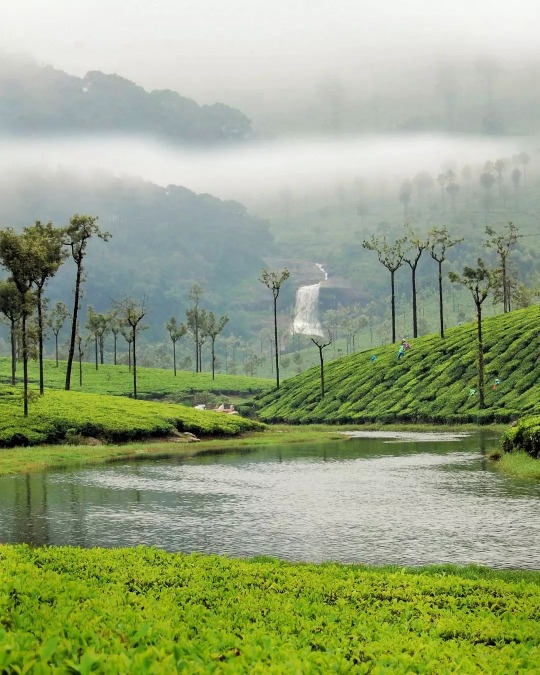
Irachal Parai Falls in Valparai, India ~ valparai_nature_shoot
#Irachal Parai Falls#waterfalls#nature#edit: nature#Valparai#India#landscape#photography#photographyedit#my edit
254 notes
·
View notes
Text
Boost Your Visual Marketing with Expert Clipping Paths in Photoshop
Did you know that over 80% of businesses use visual content in their marketing strategies? 🤯
Clipping paths in Photoshop are a powerful tool to enhance your visual content and make your products stand out. By isolating the subject from the background, you can create professional-looking images that grab your audience's attention.
Elevate your visual marketing game with our step-by-step guide on creating clipping paths in Photoshop.
Boost your sales and engagement with visually stunning product images.
#ClippingPaths#EngageAudience#PhotographyEditing#ProductPhotography#GraphicDesign#EcommerceGrowth#EyeCatchingImages#BoostSales#ProfessionalPhotography
0 notes
Text
As a visual content creator, the ability to expertly color correct your images can be the difference between a good photo and a truly captivating one. In this post, we'll share high-level expertise on the advanced techniques and strategies used by top photographers, designers, and digital artists to achieve professional-quality color correction.
#studying#ImageColorCorrection#PhotographyEditing#GraphicDesign#VisualContent#ColorGrading#ImageEnhancement#DigitalArt#CreativeTools#PhotographyTips#DesignTips
0 notes
Text

You can outsource all image photo editing activities in your post-production workflow from us at a low cost.
Get A Free Quote: https://cutthephoto.com
0 notes
Text

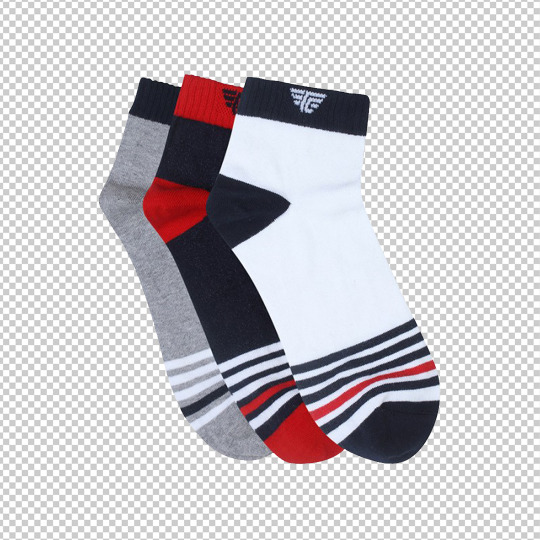
Professional Clipping Path Services At Entire Graphics, we specialize in providing top-notch clipping path services to help you create stunning, professional images. Whether you’re a photographer, e-commerce business, or graphic designer, our expert team is here to elevate your visuals with precision and care.
Our Services 1. Basic Clipping Path 2. Complex Clipping Path 3. Multi-Clipping Path 4. Clipping Path with Shadow 5. Clipping Path with Masking
Why Choose Entire Graphics? *Expert Team *High-Quality Results *Fast Turnaround Time *Affordable Pricing
Contact Us Ready to elevate your images? Contact us today to get started! Email: [email protected] Website: www.entiregraphics.com
#ProfessionalClippingPath#HighQualityEditing#imageclipping#ClippingPath#PhotoEditing#ecommercephotography#ClippingPathService#ClippingPathCompany#ClippingPathExperts#ClippingPathSolutions#ImageClipping#backgroundremoval#Ecommerce#OnlineStore#ProductImages#JewelryPhotography#FashionPhotography#PhotographyEditing#CommercialPhotography#PrecisionEditing#FastTurnaround#AffordableEditing#EditingServices#ImageRetouching
1 note
·
View note
Text
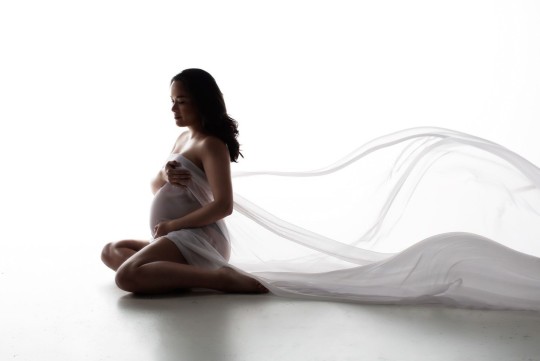
Redefine your photography with our comprehensive editing solutions tailored to your needs!
#PhotographyEditing#MaternityPhotography#NewbornRetouching#ProfessionalRetouching#CreativeRetouching#ImageEnhancement#VisualTransformation#EditingMagic#ArtisticTouch#PhotoPerfection#EnhancedImagery#DigitalArtistry#EditingExperts#PhotographyServices#VisualStorytelling#PicturePerfect#EditingServices#ImageManipulation#PhotoEnhancement#CreativeEditing#RetouchingServices#PhotographyPostProduction
0 notes
Text

Transform your photos from ordinary to extraordinary with our Photo Exposure and Color Correction Service. At Graphic Aid, we expertly adjust the brightness, contrast, and color balance of your images to bring out their true vibrancy and detail. Whether it's recovering the subtleties of a shadowy portrait or enhancing the dynamic range of a landscape, our skilled editors ensure your photos reflect the perfect blend of light and color. Let us help you capture every moment in its best light with precision and creativity.
#PhotoEditing#ExposureCorrection#ColorCorrection#ColorBalance#PhotoEnhancement#ImageEditing#Photography#PhotoPerfection#ProfessionalEditing#GraphicAid#VisualArt#PhotographyEditing
0 notes
Text
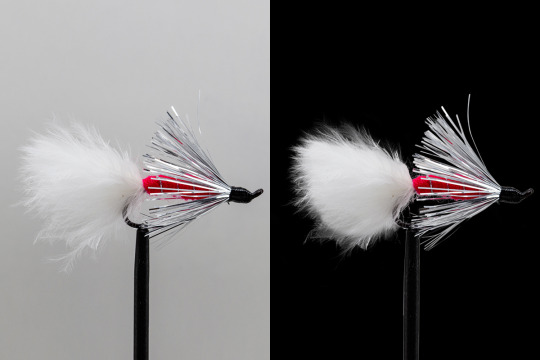
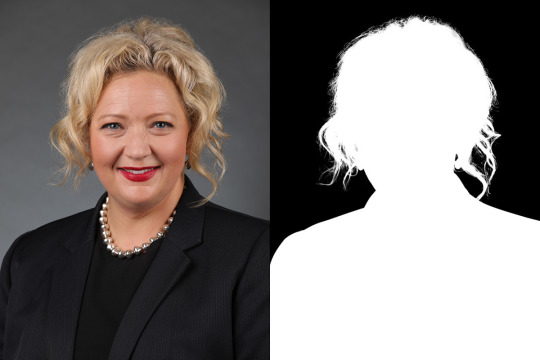
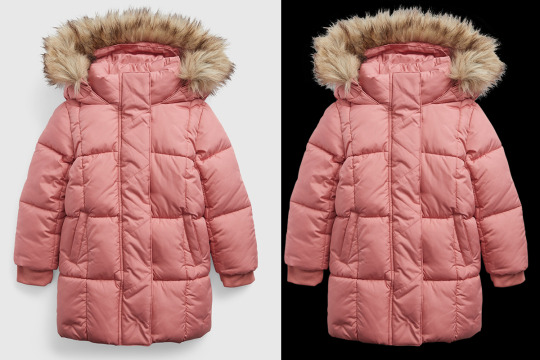
Want to save time on image editing and focus on other aspects of your business? Our image masking service can help you streamline your image editing process and free up your time.
#imagemasking#backgroundremoval#photoshopediting#productphotography#graphicdesign#postprocessing#ecommercephotography#photomanipulation#photoediting#photoshopservices#digitalart#professionalphotography#imageediting#productphotographer#designservices#photographyservices#creativeediting#photographyediting#graphicdesignservices#photoeditingexperts#photoshopartist
0 notes
Photo

I'm sorry it's been a while. Here are new photography of the moon. (Thanks to my mum for these shots) #photographyofthemoon #photgraphy #photographyofnature #photographyoftheday #photographyediting (at Olympia, Washington) https://www.instagram.com/p/CpoQFphPK5dNhv4r-hLao_xi-WRSnu0eklm2PQ0/?igshid=NGJjMDIxMWI=
0 notes